
Geranium sanguineum
It is widespread in Europe, differs in strongly dissected openwork leaves, forms rounded bushes from 20 to 40 cm high or grows as a loose carpet (depending on the variety).

Blooms from mid-July for 30-40 days with large Carmine-red flowers, has decorative forms with white, pink, purple-purple flowers.
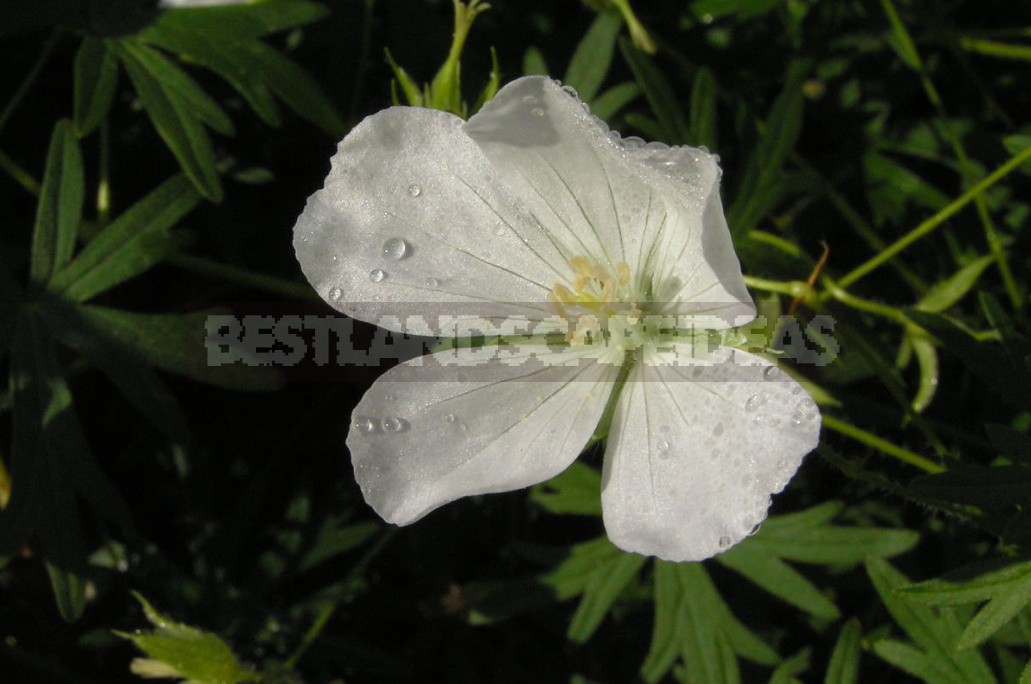
Geranium sanguineum var. striatum is a compact variety of Geranium sanguineum with bright pink veins on a pale pink background of petals. The new ‘Canon Miles’ has lavender flowers with a white border.
It is planted in rockeries, in the foreground of flowerbeds with perennials, along paths.
Geranium macrorrhizum
Native to the Alps and Carpathians, it quickly forms a closed cover up to 30 cm high with the help of lignified decumbent stems. Fragrant leaves in autumn the leaves turn a beautiful color.
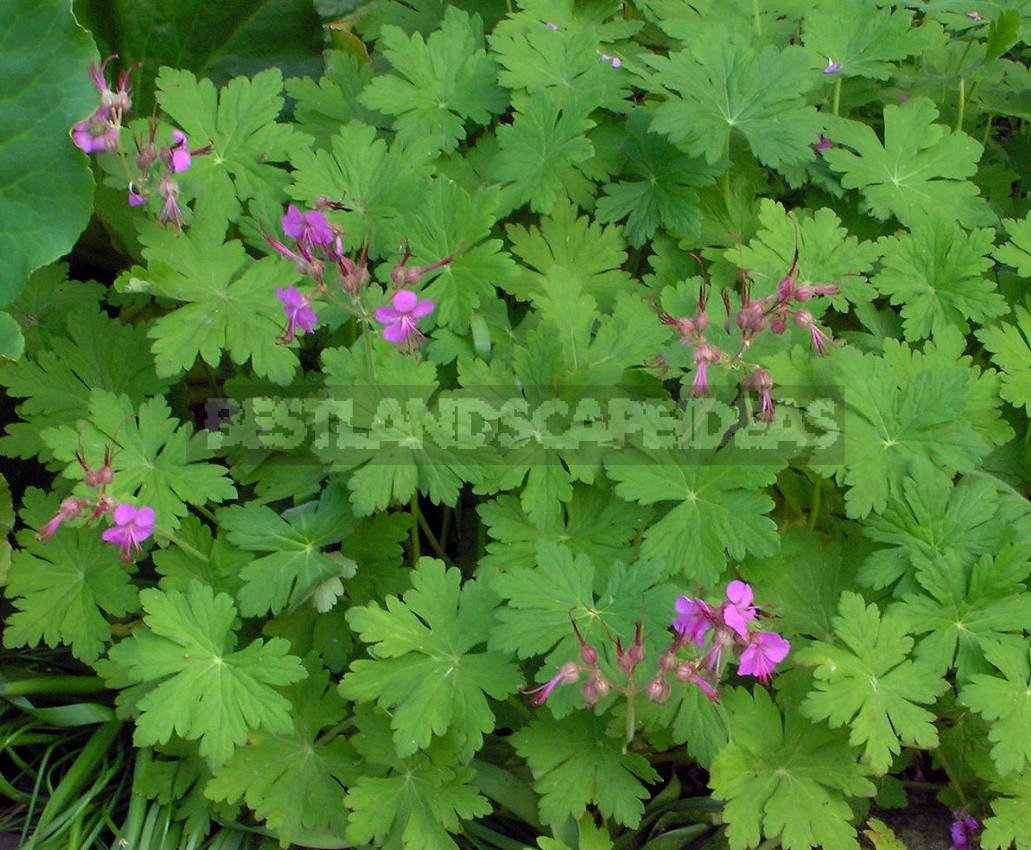
This Geranium is very unpretentious, grows well in partial shade and tolerates even dry shade under the crowns of trees. Blooms in early summer. There are decorative forms with flowers of various colors, the form ‘Variegatum’.
Universal ground cover plant, dense closed cover leaves no chance for weeds.
Geranium sylvaticum
A widespread European species with deeply dissected leaves; lilac-blue flowers with a white center bloom in late spring. Prefers partial shade, especially in the hot season.
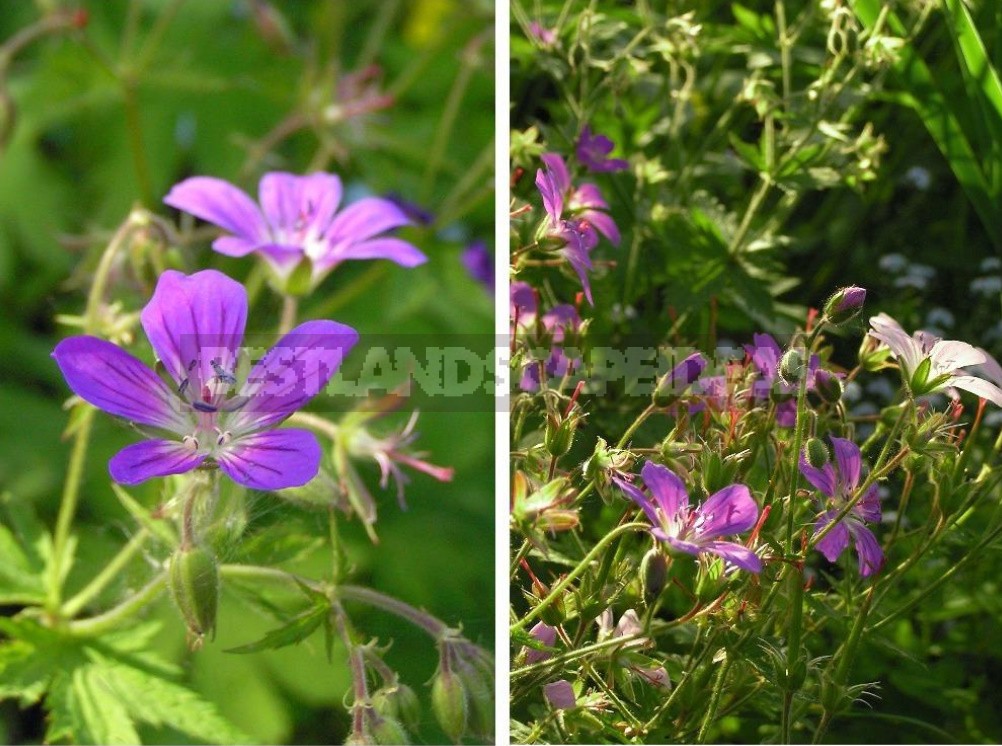
Geranium pratense
A widespread species, the height of dense bushes – from 80 to 125 cm, the leaves are divided into 5-7 lobes, large purple-blue flowers bloom in early summer.

There are varieties with flowers of different colors, there are three Terry varieties.

Extremely effective varieties with red-purple and black-purple leaves – ‘Hocus Pocus’, ‘Midnight Reiter’, ‘Victor Reiter’, ‘Purple Heron’, ‘Okey Dokey’.
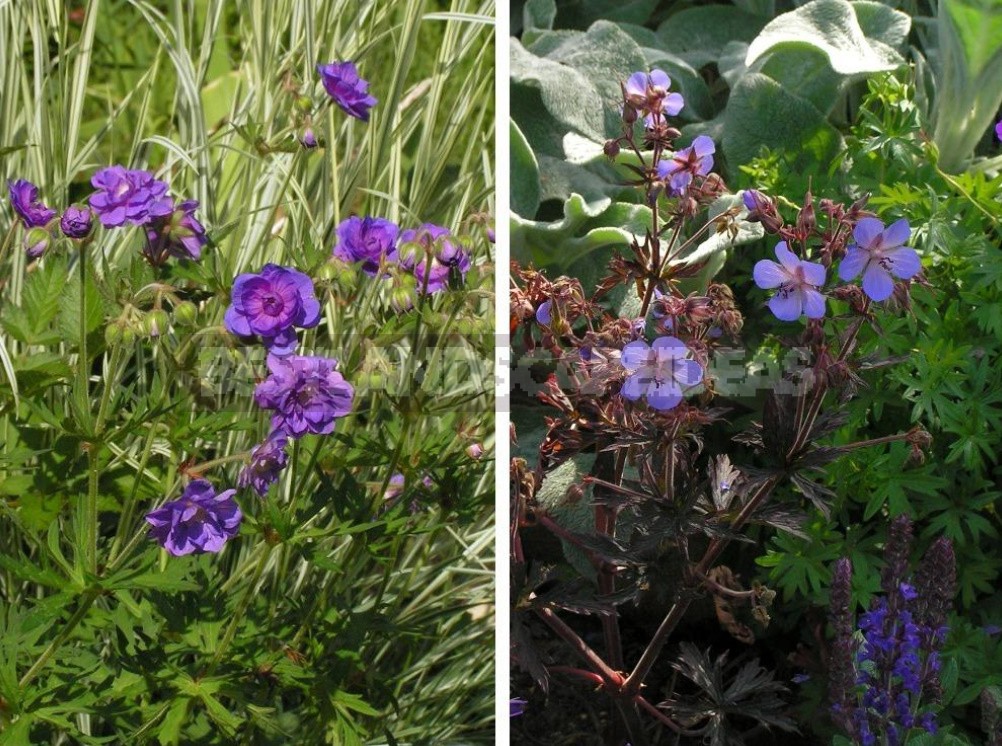
This Geranium species prefers well-lit areas with moisture-intensive soils. It is perfectly combined in its appearance with other plants that are suitable for the same conditions: Filipendula, Geum, Polemonium, Leucanthemum, Sanguisorba, Thalictrum, trolius, Lysimachia.
As a support for varieties with unstable peduncles, Monarda with flowers of delicate shades is perfect. Terry forms are subject to powdery mildew, so they need to be planted in a very Sunny place and not thicken. They are perfectly combined with Lavandula, Artemisia, and Thalictrum.
Geranium x magnificum
A hybrid of Geranium platipetalum and Geranium ibericum that has been cultivated since the 19th century. This is a beautiful garden plant, forming powerful bushes up to 70 cm high, with large, up to 5 cm in diameter, lilac-blue flowers.

The ‘Rosemoor’ clone has blue-purple flowers covered with red veins. Classic is a contrasting combination with yellow-green inflorescences of Alchemilla soft, bright orange Geum and poppies. The cut is perfectly in the water, all the buds are blooming.
Geranium psilostemon
It stands out among other large bright crimson flowers with a black center, blooms from mid-June to the end of July. Height – up to 70 cm, five-part leaves, large. In the famous English garden of Sissinghurst, this species adorns a purple flower garden along with dark-leaved Cotinus, bows, roses, Clematis, Penstemon. Another option, more calm-a combination with lemon-yellow Anthemis, Hemerocallis, Alchemilla.
The smallest Geranium
These plants are especially good in the sun among stones
Geranium renardii
This species forms compact bushes up to 20 cm in height with gray or olive-green “velvet” round leaves, dissected to the middle by 5 lobes. Its flowers are not very interesting – almost white or pale lilac with dark lilac veins. Used for color or tonal contrasts, for planting in the foreground in gray or silver flower beds.
Geranium cinereum
Miniature Pyrenean species, no higher than 15 cm, flowers up to 2.5 cm in diameter, white or pink, bloom in early summer. Leaves are small, dissected, gray-green due to soft pubescence.
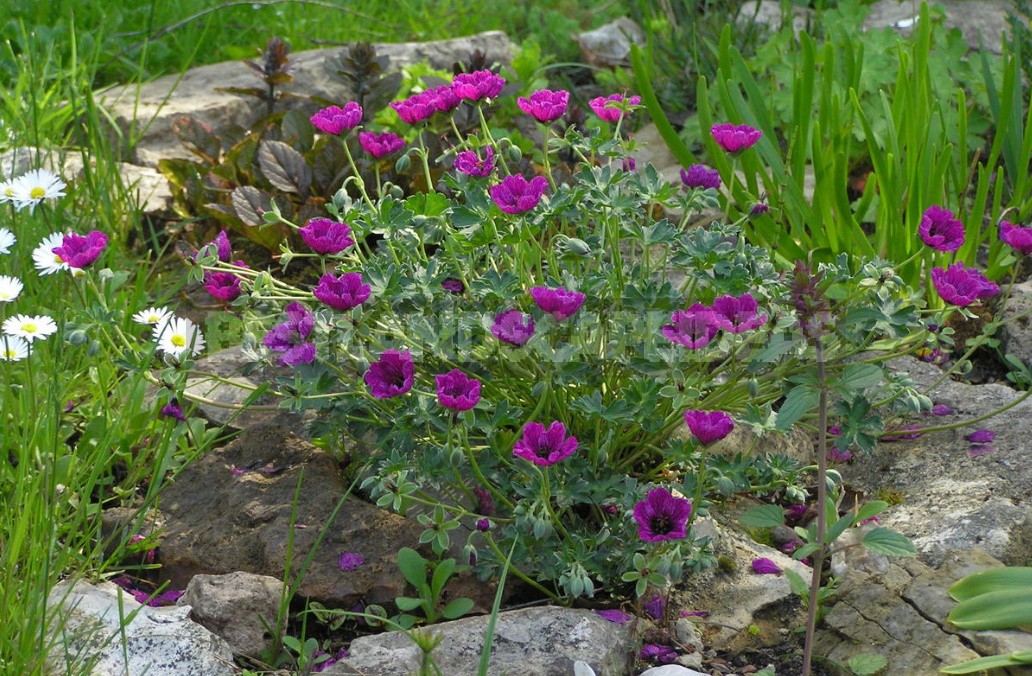
Varieties are grown that are much easier to cultivate than the natural species. Especially good are ‘Album’ with white flowers, ‘Artistry’, ‘Lawrense Flatman’, ‘Ballerina’ with pink flowers and purple veins.

The subspecies Geranium cinereum var. subcaulescens leaves are dark green, with a black spot in the center of the flower. There are varieties with bright crimson, dark purple flowers, for example, the variety ‘Purple Pillow’, and the varieties ‘Splendens’ and ‘Carol’ have very bright flowers with a white border around the black center.
Geranium Propagation
Geranium can be propagated by dividing the Bush, seeds, cuttings and segments of roots. The method of propagation by segments of roots is most successful for small geraniums — for example, Geranium cinereum.
- Dig the plant in early spring, taking care not to damage the roots.
- Clean the plant from the ground and rinse with water.
- Choose fleshy healthy roots, cut them off with a clean sharp knife across the root of the part, leaving at least a third of the root on the plant intact.
- Cut the cut parts of the root into pieces 3-5 cm long.
- Process these pieces in some kind of root formation stimulator.
- Prepare a tray and fill it to a third of the height with sterile sandy soil or compost.
- Put the pieces of roots and cover them with a layer of the same soil or compost about 6 mm high.
- Seal and pour.
Place the plantings in a greenhouse or on a windowsill until the sprouts come out. Do not over-dry, but do not over-water. When the sprouts are well formed, transplant them into individual containers in good compost.
And don’t forget to plant a Geranium Bush in your garden.

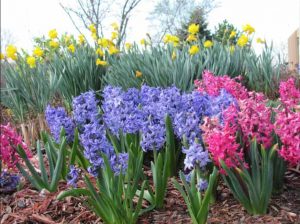


Leave a Reply